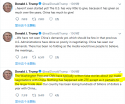The anxiety over Chinese techno prowess is the root cause of this trade war ARM take center place in this dispute. As it stands, about 90% of the world’s mobile devices use the ARM chip “blueprint.” With the recent incorporation of Mini ARM China try to secure its technology "DNA"
Of course this author put different spin on the technical acquisition "why it is illegal to acquire technology"
The technological ARMs war over ‘Made in China 2025’
A move to link up with one of the world’s most influential chip companies illustrates the scope of Beijing’s ambitions and Washington’s concerns
By
MAY 17, 2018 6:29 PM (UTC+8)
From Asia Times
A circuit board for smart devices. Photo: iStock
Advanced RISC Machines hardly rolls off the tongue. Known as ARM Holdings to the business fraternity, it is not exactly a household name in Scunthorpe, Seattle or Shanghai.
Yet this high-tech research and development company could end up being crucial to President Xi Jinping’s ambitious “Made in China 2025” project, which aims to turn the world’s second-largest economy into a technological powerhouse.
“ARM Holdings doesn’t build processors
per se,”
consultant at Dimension Data, told ZDNet, a business technology news website published by CBS Interactive and TechRepublic.
“It creates reference designs or ‘architectures’ which are essentially the basic blueprints, or the ‘DNA,’ of how semiconductors work,” he added. “[The firm] then licenses those basic designs to other companies, which in turn use them in their own chips.”
From humble beginnings amid the dreamy spires of the university city of Cambridge in England, ARM has become a ‘hothouse’ of innovation since the 1990s and is part of what the United Kingdom calls ‘Silicon Fen,’ a typically British play on Silicon Valley.
Now part of
sprawling SoftBank Group after a
in 2016, the semiconductor designer’s core customers are Apple, Samsung and Qualcomm, who are licensed to incorporate their chip designs.
Its influence is immense.
High-tech hub
In April, ARM set up a joint venture in Shenzhen’s high-tech hub. Since then, plans have emerged that the company is planning to cede control to a Chinese consortium, including Hopu-Arm Innovation Fund, which is also known as Hou An Innovation Fund, according to China’s Ministry of Science and Technology.
Other key investors are believed to be Baidu, which is China’s answer to Google, Bank of China Group Investment and venture capital firm Sequoia, the two weeks ago.
If the deal goes through, the new entity will be known as Arm Mini China. Obviously, sharing future technology by boosting funding for further research and development in the microchip field will become a priority. Money will be no object.
“It’s hard to predict how long it will take for China to catch up with others, or successfully develop its own core technologies, but for traditional chip sectors, the time will be longer,”
of the inappropriately named China Solid State Lighting Alliance, a technology research and investment firm in Beijing, said.
As it stands, about 90% of the world’s mobile devices use the ARM chip “blueprint.”
The group’s Chinese clients include Huawei’s semiconductor division, Hisilicon Technologies, Xiaomi and Fuzhou Rockchip Electronics under a “royalties” scheme.
But it is the R&D work, conducted by roughly 250 employees in Shenzhen, which is the perfect fit for the “Made in China” program.
In its scale, the project is breathtaking.
Rolled out in 2015, four years after Germany’s
Industrie 4.0 initiative was launched at the Hanover Fair, the policy encompasses
, from chips, computers and the cloud to smart cars to smart cookers.
Renewables, railways and robotics are other vital areas earmarked, along with the Internet of Things, and interconnected smart technology linked through artificial intelligence, or AI, for the pharmaceutical industry.
Yet the sheer depth of the scheme has triggered a technological arms race, with US President Donald Trump insisting that China’s state subsidies for high-tech industries must be curtailed as trade talks resume in Washington this week.
“The current trade war between the United States and China is not about trade,”
at the Carnegie Endowment and author of
Cracking the China Conundrum: Why Conventional Economic Wisdom Is Wrong, wrote in an opinion piece for Caixin.
Dominant economic power
“This war is about protecting the technological edge that has made the United States the world’s dominant economic power,” the former World Bank director for China added on the Beijing-based media website.
Running alongside the trade spat has been the ZTE saga. The Shenzhen telecom giant has been left crippled after being banned for seven years from buying US-made components, such as semiconductors, wrecking its supply chain.
A stellar company in China’s tech firmament,
to have violated a sanctions settlement, involving illegal exports to Iran and North Korea, by the US Commerce Department.
Beijing’s take, though, has been quite different, pointing out that this was a direct assault on its cutting-edge tech sector and the coveted “Made in China” policy.
“We have good reasons to question the legality and legitimacy of many actions taken by the US on the grounds of national security, like its plan to impose high tariffs on many industries of ‘Made in China 2025’,” Hua Chunying, a spokeswoman for the Chinese Foreign Ministry, told a media briefing last month. “Clearly, they are targeting something else.”
Still, the same could be said of the move to snap up ARM’s joint venture and the state-sponsored move to dominate tomorrow’s technology today.


